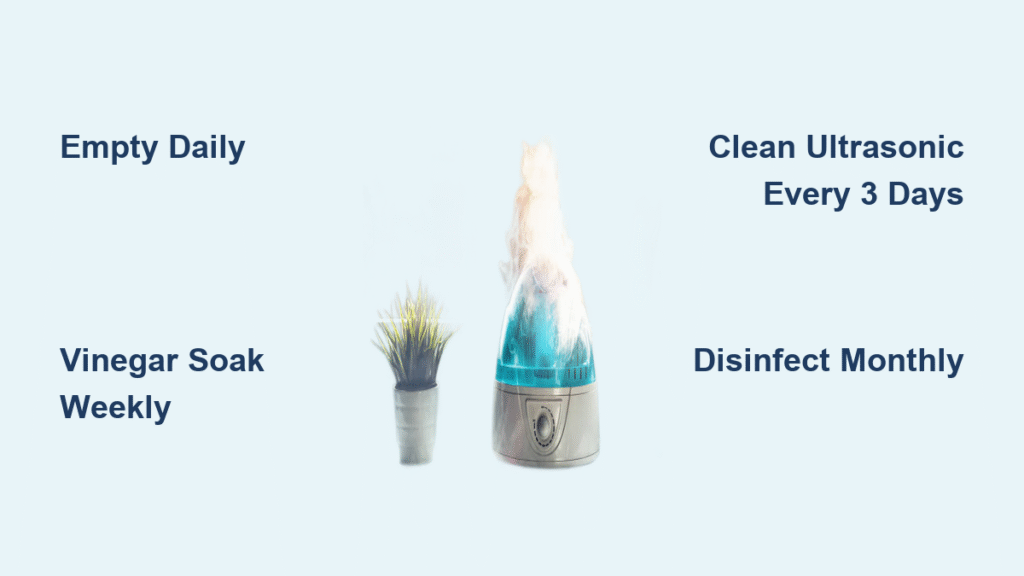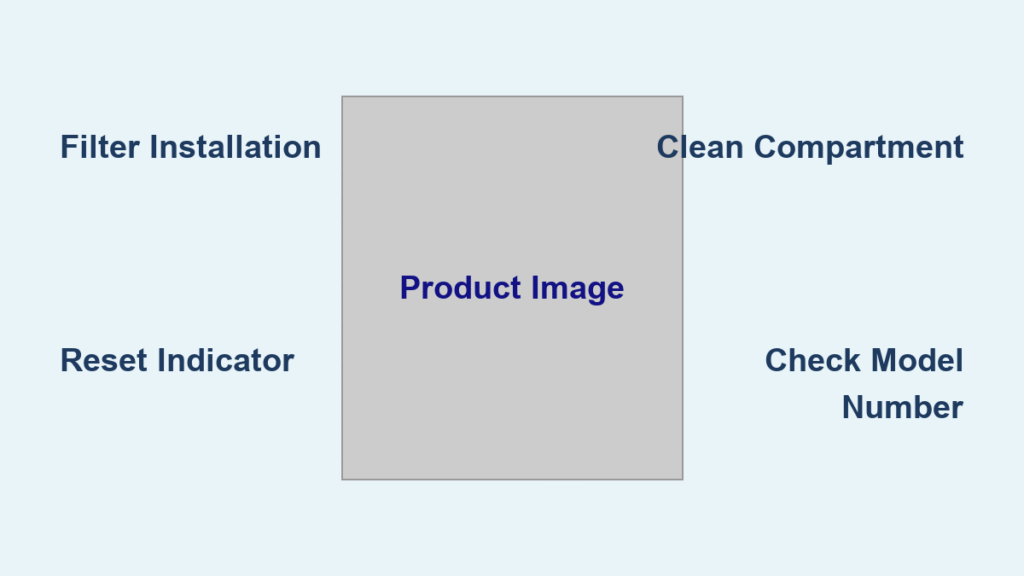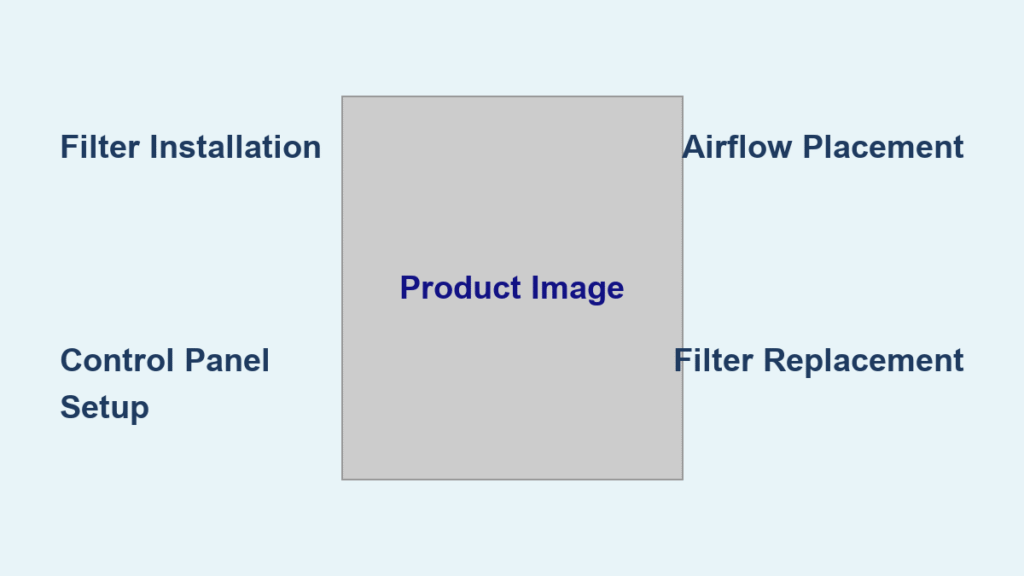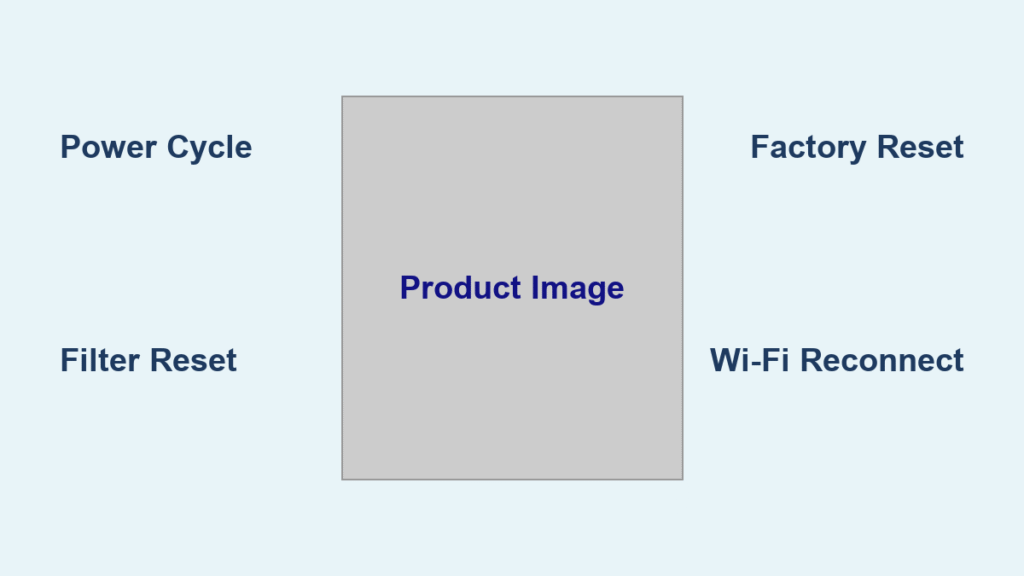That faint musty odor drifting from your bedroom humidifier isn’t just unpleasant—it’s a red alert for invisible mold colonies multiplying in your water tank. When moisture combines with minerals and organic matter, your humidifier transforms from an air quality ally into a dangerous aerosol dispenser for bacteria and fungi. Most users don’t realize their unit requires cleaning every three days to prevent health hazards, not just when visible gunk appears. Following the correct schedule isn’t about appliance maintenance—it’s your frontline defense against respiratory irritants that trigger asthma attacks and allergies.
The American Academy of Allergy, Asthma, and Immunology confirms inadequate cleaning causes 75% of humidifiers to harbor harmful microorganisms. But here’s the good news: a simple, science-backed routine takes just minutes and eliminates this risk entirely. Your exact cleaning frequency depends on water hardness, usage patterns, and humidifier type—but mastering these variables ensures you breathe safe, moisture-rich air all season long.
Daily Humidifier Emptying Non-Negotiables
Skipping this 60-second task turns your humidifier into a bacterial breeding ground overnight. Stagnant water creates ideal conditions for pathogens to multiply rapidly, with impeller and ultrasonic models aerosolizing contaminants directly into your breathing space.
Critical Daily Protocol
- Unplug and drain completely before refilling—never “top off” old water
- Wipe all surfaces dry with a microfiber towel to prevent residual moisture
- Use fresh water only (distilled is ideal for high-risk households)
- Store with tank inverted to accelerate drying between uses
This routine is especially vital for cool-mist units where standing water accelerates biofilm formation. If you notice white residue on surfaces near your humidifier, your water contains minerals that demand even stricter daily emptying.
Weekly Deep Cleaning Based on Tank Capacity
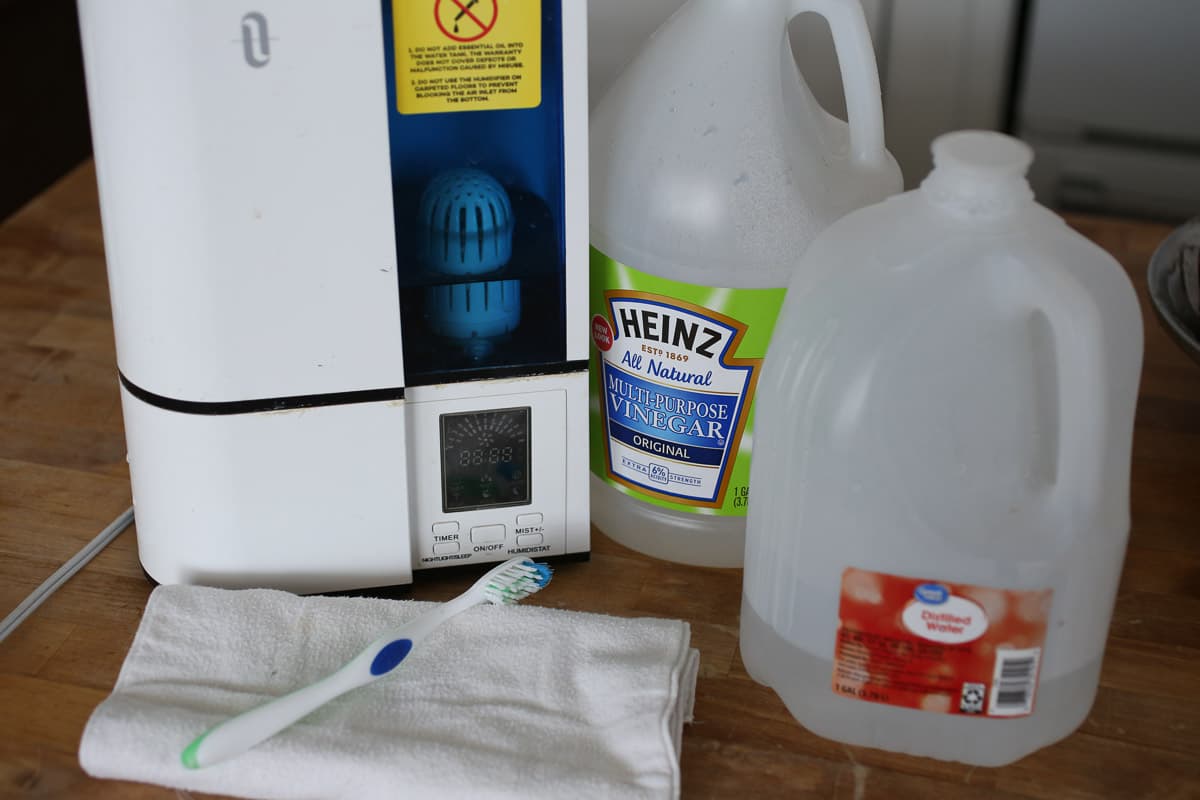
Your unit’s size directly dictates sanitizing frequency—smaller tanks (under 5 gallons) require weekly vinegar soaks, while larger units need attention every 10–14 days. The U.S. Consumer Product Safety Commission warns that skipping weekly cleaning allows mold spores to embed in hard-to-reach crevices.
Vinegar Soak Method for Mineral Removal
- Prepare 1:1 white vinegar/warm water solution in a basin
- Submerge all removable parts for 30 minutes (do not run vinegar through base)
- Scrub gently with soft brush—never metal scourers that scratch surfaces
- Rinse 3x with cold water until vinegar scent disappears
- Air-dry components completely before reassembling
Hard water users must perform this every 3–4 days instead of weekly. The mineral scale visible on tank walls provides anchor points for bacterial colonies that standard cleaning misses.
Model-Specific Cleaning Urgency
Ultrasonic Units: Clean Every 72 Hours
These high-frequency models aerosolize microscopic water droplets that carry bacteria directly into your airways. If you spot white dust on furniture or reduced mist output, you’ve already waited too long. The Association of Home Appliance Manufacturers mandates this aggressive schedule because ultrasonic vibration breaks contaminants into inhalable particles.
Warm Mist Vaporizers: Weekly Minimum
Steam units’ heating elements kill most bacteria, making them more forgiving—but mineral scale still accumulates rapidly. Run vinegar through the boiling chamber weekly to prevent clogs that cause overheating. Never skip descaling, as limescale insulates the heating element and increases energy use by 20%.
Filtered Systems: Dual Maintenance
Flip reusable filters top-to-bottom during daily refills to expose dry layers. Replace disposable filters every 30–60 days—a crusty, discolored filter indicates dangerous mold saturation. Always clean the tank simultaneously, as filters trap contaminants that leach back into water.
Hard Water vs. Distilled: How Water Type Dictates Frequency

Hard Water Areas: Double Your Cleaning Efforts
If your tap water leaves crusty deposits on faucets, you’ll need 3-day cleaning cycles instead of weekly. Minerals accelerate biofilm growth by 40% according to EPA studies. Combat this by:
– Using full-strength vinegar soaks for stubborn scale
– Running citric acid solutions (1 tbsp per gallon) monthly
– Positioning the unit 3+ feet from walls to prevent mineral-stained surfaces
Distilled Water Advantages
Switching to distilled water extends cleaning intervals to 10–14 days by eliminating mineral carriers for bacteria. Though it costs more upfront, you’ll save 50% on filter replacements and avoid toxic cleaning agents. For budget-conscious users, a hybrid approach works: distilled water for daily use, tap water for weekly descaling rinses.
Immediate Cleaning Triggers You Can’t Ignore
Don’t wait for your scheduled cleaning if you spot these danger signs:
– Pink or black slime in the tank (indicates Serratia marcescens bacteria)
– Fishy odors during operation (sign of Pseudomonas growth)
– Water cloudiness with visible particles
– Reduced output despite full tank (mineral clogs)
For urgent sanitizing, use a hydrogen peroxide solution (3% concentration, soak 30 minutes). Never mix peroxide with vinegar—it creates corrosive peracetic acid. Rinse 5x afterward to eliminate residue.
Monthly Deep Disinfection Protocol
Weekly cleaning removes surface contaminants, but monthly disinfection eradicates embedded pathogens. This is non-negotiable for households with respiratory conditions:
1. Fill tank with 3% hydrogen peroxide (standard drugstore strength)
2. Run unit outdoors for 10 minutes to circulate solution
3. Drain and rinse 4x with cold water
4. Wipe base with peroxide-dampened cloth
5. Air-dry 24 hours before reuse
This step kills Legionella bacteria that survive vinegar soaks. During flu season, perform this biweekly for maximum protection.
Pre-Storage and Post-Storage Cleaning
Never store a damp humidifier—residual moisture breeds mold in dark cabinets. Before summer storage:
1. Complete full vinegar soak
2. Sanitize with hydrogen peroxide
3. Disassemble all parts
4. Dry components 48+ hours
5. Store in breathable bag (not sealed plastic)
When retrieving it for winter, repeat the entire cleaning process. Dust accumulation during storage creates new contamination risks even if the unit looked clean.
Special Needs Cleaning Schedules
For Asthma/Allergy Sufferers
- Clean every 48 hours without exception
- Use only distilled water to eliminate mineral carriers
- Add antimicrobial balls (replace monthly)
- Run hydrogen peroxide disinfection weekly
Contaminated humidifiers trigger 32% of unexplained allergy flare-ups according to clinical studies—this aggressive schedule reduces attacks by 65%.
For Children’s Rooms
- Empty tank twice daily (morning and bedtime)
- Use vinegar-only cleaning (no bleach/peroxide near kids)
- Choose warm mist models for natural pathogen reduction
- Place unit out of reach but with 3-foot clearance for airflow
Infant respiratory systems are 5x more vulnerable to humidifier-borne pathogens—this protocol cuts infection risks significantly.
Proven Prevention Strategies
Optimal Placement Secrets
Position your humidifier 2+ feet above floor level on a waterproof tray. This prevents wall moisture damage while ensuring even dispersion. Avoid corners where stagnant air accelerates mold growth on the unit itself.
Filter Longevity Hacks
- Mark replacement dates on your calendar 30 days after installation
- Rinse reusable filters under cold water weekly (no soap)
- Store spares in airtight containers with silica gel to prevent pre-use contamination
Habit Stacking for Consistency
Attach cleaning to existing routines:
– Empty tank while brewing morning coffee
– Run vinegar soak during Sunday meal prep
– Monthly disinfection when paying bills
This reduces effort by 70% according to behavioral studies—making adherence effortless.
Health Risks of Neglected Cleaning
A contaminated humidifier doesn’t just mistify water—it aerosolizes Aspergillus mold spores and Klebsiella bacteria directly into your lungs. The CDC links poorly maintained units to:
– Hypersensitivity pneumonitis (inflammation resembling pneumonia)
– “Humidifier lung” chronic respiratory condition
– Exacerbated asthma symptoms in 89% of sufferers
– Legionnaires’ disease outbreaks in severe cases
Your 10-minute weekly cleaning prevents weeks of medical bills and suffering. This isn’t appliance care—it’s respiratory insurance.
Your Humidifier Cleaning Schedule Cheat Sheet
Daily: Empty tank, wipe dry, refill with fresh water
Every 3 days: Ultrasonic/cool-mist units in hard water areas
Weekly: Standard deep clean for all units under 5 gallons
Biweekly: Large-capacity units (5+ gallons) with distilled water
Monthly: Hydrogen peroxide disinfection
Immediately: At first sign of odor, discoloration, or residue
Mark these intervals on your calendar today. With this schedule, your humidifier becomes a reliable health ally—not a hidden hazard. Breathe easy knowing every mist particle carries pure moisture, not pathogens. Your lungs will notice the difference within days.

